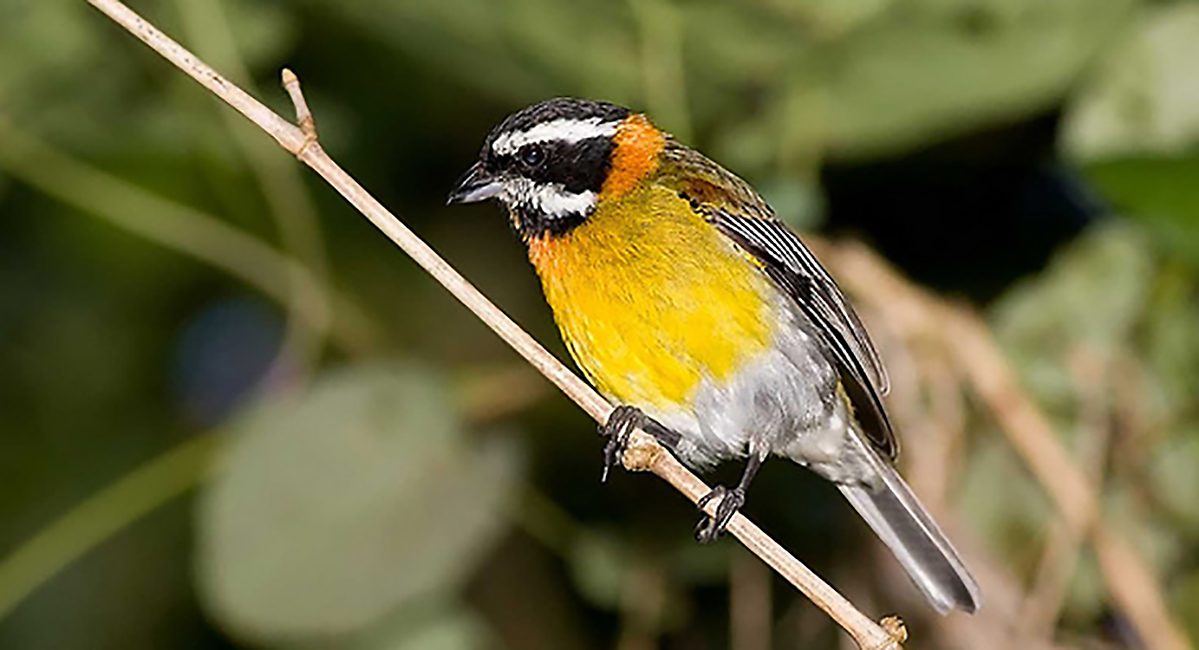Puerto Rican Spindalis
Formerly classified as a subspecies of the Stripe-headed Tanager, the Puerto Rican Spindalis recently was recognized as a unique allospecies endemic to Puerto Rico. Known for its high-pitched song and call notes, this territorial bird can be found at almost all elevations wherever fruit is readily available.

General Information
Distribution

Habitat
Found at all elevations wherever fruits are in abundance. This includes urban areas and university campuses, as well as the more traditional woodland and forested habitats. Demonstrates a preference for humid areas with thickets and lower vegetation near forested areas. In non-forested areas, usually found in areas with patches of trees, especially plantations.
Food
Forages at all strata, from low in the bushes to the treetops. The most often reported component of the diet is fruit. Other records include observations of this bird eating seeds, leaves, and insects.
Behavior
Highly territorial, the Puerto Rican Spindalis has been observed fighting with its own image in car mirrors. Both males and females defend the territory, although males do so more; they are Monogamous. Most members of this species live in small groups of up to five birds consisting of the breeding pair and chicks. The breeding season typically extends from March through the end of June, although breeding has been reported as early as December.
Nesting
The nest typically is a loose cup of vegetation, constructed in low bushes or trees. It has also been described as a messy construct, somewhat similar to a dove’s nest. A clutch consists of 2-4 pale, spotted eggs. Egg color is highly variable, both within a single island population and across the genus.
How to Identify
Appearance
Size and Shape
The adults have a wing cord extension of roughly 7.5 –9.1 cm in males; and 5.4 –8.4 cm in females. The Adult weight is approximately 30 grams.
Color Pattern
Male Puerto Rican Spindalis have a yellow throat, white chin patch, and an orange neck collar. Two white stripes run the length of the black head and the upperparts are a bright yellow-green. In contrast, females are much less distinctive and have a dull olive-green coloration on their upperparts.
Similar Species
The three other allospecies within Spindalis share many physical and behavioral life history traits with Spindalis portoricensis. However, the Puerto Rican Spindalis is the only one of this species group that is present in Puerto Rico, making field identification straightforward.
Hechos Divertidos
Did you know?!
The Puerto Rican Spindalis is distributed widely across the island of Puerto Rico and is found even in disturbed habitats. The global population size has not been quantified, but the population trend is believed to be stable. Consequently, the conservation status of this bird is rated as of Least Concern under the IUCN species Red List.